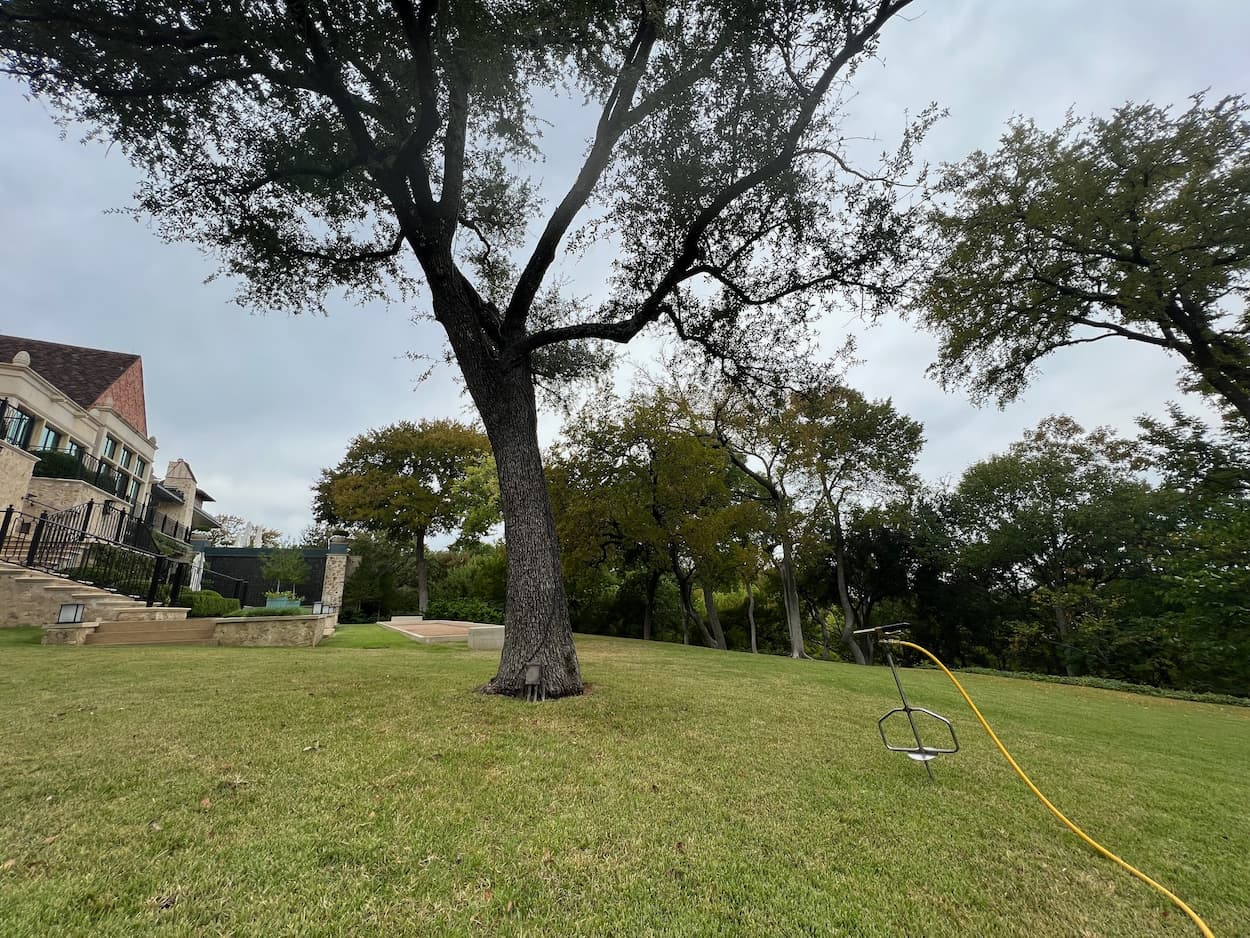Texas Shrubs & Tree Health Care Experts
Caring For Texas Shrubs & Trees Since 1990 Get A Free QuoteCall (817) 880-6130Tree & Shrub Pest Treatment Services in Josephine, TX
Our ISA Certified Arborist Can Help Treat Your Trees and Shrubs From Pests in Josephine, TX.
Arborist USA provides Tree & Shrub Pest Treatment Services in Josephine, Texas, and the surrounding areas.
In the charming town of Josephine, Texas, the verdant trees and blossoming shrubs contribute to its allure. However, these ecological treasures face the consistent threat of pests, compelling the town to adopt comprehensive tree and shrub pest treatment strategies. Josephine’s steadfast commitment to maintaining its verdant landscapes against pests illustrates a perfect equilibrium of human intervention and nature’s processes. The town’s holistic strategy safeguards its unique flora, cementing its commitment to environmental protection and leaving a green legacy for future generations.
If you are in need of Tree & Shrub Pest Treatment Services in Josephine, TX, please get in touch with Arborist USA today by calling us at (817) 880-6130, your Tree & Shrub Disease Specialist.
Signs of a Sick Tree or Sick Shrub
- Dead Branches
- Yellowing Leaves
- Fungi or Decay
- Bark Falling Off
- Discolored or Rusted Leaves
- Dying Tree or Shrub
- Leaf Discoloration
- Root or Insect Damage
- Leaves look like they’re being eaten
- Bark is Peeling
- Holes in leaves
- Holes on Bark or Branches
- Stunted Growth
- Canopy Dieback
- Bark Abnormalities
- Wilting
Tree & Shrub Helpful Tips
1. Common Pests:
Trees and shrubs in Josephine frequently fall victim to pests such as beetles, aphids, scale insects, borers, and caterpillars. Initiating effective treatments as soon as these pests are identified can help mitigate the risk of spread and irreversible damage.2. Quick Identification:
Early pest detection and identification form the cornerstone of Josephine’s pest management program. This approach allows for timely interventions, preventing minor infestations from becoming widespread and ultimately devastating.3. Organic Pest Control:
Josephine places emphasis on organic pest control methods, staying true to its commitment to sustainability. It achieves this balance by creating environments that attract beneficial insects, which naturally curb destructive pest populations, decreasing the dependence on harsh, synthetic pesticides.4. Systemic Insecticides:
Nevertheless, when more tenacious pests pose a significant threat to the town’s greenery, Josephine does employ systemic insecticides. Their use is carefully regulated to strike a balance between effective pest control and the conservation of the broader ecological health.5. Biological Control:
Josephine also has mechanisms to encourage biological control of pests. By creating hospitable conditions for natural predators of pests including birds, they leverage local biodiversity to supplement their pest control efforts.6. Preventive Measures:
Preventive care plays a critical role in the town’s pest treatment strategy. Regular tasks like proper watering and pruning help keep the plants healthy, increasing their resilience and making them less susceptible to pest attacks.7. Treatment Resistance:
Understanding that pests can develop resistance to treatment methods, Josephine incorporates a rotation system in their pest control strategy. Alternating different control methods hinders pests from developing immunity, ensuring the prolonged effectiveness of the treatments.8. Seeking an Arborist:
The town values the role of professional guidance in its pest management efforts, consistently consulting certified arborists and trained pest control experts. Their expertise provides invaluable insights into evolving pest behavior and innovative control strategies.
If you’re concerned or have any further questions about our Tree & Shrub Pest Treatment Services in Josephine, TX, or surrounding areas in North Texas, please call us at (817) 880-6130.
Tree & Shrub Pests
Listed below are common Tree & Shrub Pests found in Texas.
Aphids
A white soft body insect that creates a sticky "honey dew" structure on limbs or leaves, blocking nutrients.
Bagworms
Bagworms lay eggs that create small cone-shaped structures less than three inches in length.
Beetles
An invasive wood borer that is subject in all wood tissue that causes severe decline in trees health.
Gypsy Moth
A larva that boars into leaf structure that cause lesser of a foliation and decline in overall leaf structure.
Oak Gall
A growth deformity known as a "gall" commonly occur on oak trees subject to branches and other structures.
Termites
Termites, wood-destroying insect, eats away at all wood tissue, damaging the structures of the trees.
Twig Girdlers
Being a member of the long-horned beetle family, these girdlers are known to eat leaf and other tree areas.
Webworms
These caterpillars spin white webbing bag nests in tree branches and eat your tree foliage (leaves).
Certifications




Our Reviews

A+ BBB Rating based on 31 BBB Reviews
4.8/5.0 based on 83 Top Rated Local Reviews
4.6/5.0 based on 36 Facebook Reviews
4.0/5.0 based on 4 Trust Pilot Reviews

4.9/5.0 based on 90 Google Reviews
4.5/5.0 based on 13 Yelp Reviews
29 Recommendations on Nextdoor
Total Reviews: 286 ![]() Real Customer Reviews
Real Customer Reviews







